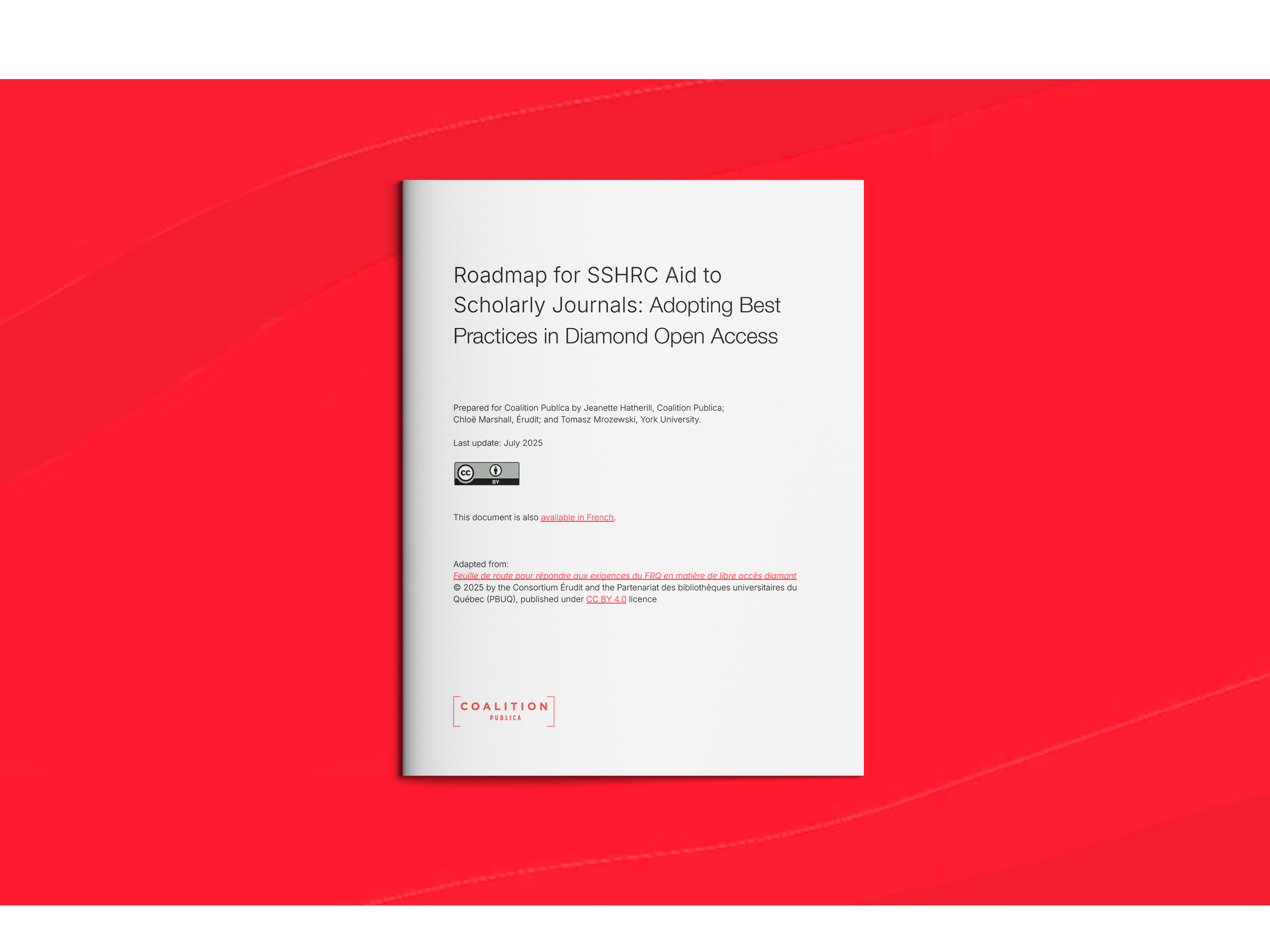
In collaboration with our library publishing partners, Coalition Publica has prepared a strategic planning tool for journals that wish to align with best practices and diamond open access requirements, in preparation for the Aid to Scholarly Journals (ASJ) 2028 competition.
In the summer of 2025, the Social Sciences and Humanities Research Council (SSHRC) announced its new ASJ program. The competition introduces new requirements for eligible journals for the next competition, scheduled for 2028. By 2028, SSHRC will require that all journals be made available in immediate open access without article processing charges (also known as diamond open access), have an open licence and be aligned with the criteria of the Directory of Open Access Journals (DOAJ) to be eligible for funding.
This road map is meant primarily for Canadian scholarly journals, with or without an embargo period/moving wall, that do not already use an open licence and that intend to comply with the criteria laid out in the 2025 SSHRC ASJ program. However, due to the focus on best practices any journal wanting to transition to a diamond open access model may find its guiding principles useful, whether they are applying for SSHRC’s ASJ or not.
After a preliminary stage of information gathering, aiming to situate journals within their specific environments, the road map outlines the key requirements of the SSHRC ASJ grant. Open licences, copyright, the DOAJ, an optional self-archiving policy, decision making and implementing the plan; the document makes sure journals don’t miss key stages in their OA transition planning, proposing visual timeline pointers. Budgetary analysis, perhaps the most daunting element of the transition for most, can be compartmentalized (a healthy coping strategy!) to make sure that the before and after costs and revenues are accounted for, using a handy downloadable spreadsheet. Importantly, the road map points towards the people and resources which can help journals at each step.
Despite the road map being structured to help journals with their 2025 SSHRC grant applications, we hope it will serve as a tool for editorial teams throughout the next few years to maintain their eligibility for the next funding period, by keeping in mind diamond OA best practices.
We want to make clear that the road map is not a detailed guide, as it cannot take into account each individual journal’s unique context. It is intended as an extended checklist to ensure that the main, essential elements of the transition are factored into planning. Further, as times evolve and journals move towards an open access future, Coalition Publica is open to any suggestions for improvements to this document.
We would like to extend our warmest thanks to the members of the CARL Library Publishing Community Engagement Team, and in particular Tomasz Mrozewski, Digital Publishing Librarian at York University, for their collaboration in developing the Roadmap to Open Access.
If you’re thinking of flipping your journal to open access, our team can provide you with the information and support you need. Contact us at edition@erudit.org.


Other resources available to journals
- OJS guide to statistics and reports for SSHRC ASJ
This guide explains how to access the statistics available on your OJS instance, including data on authors, reviewers, article views, etc. It also outlines what information may be available to you, depending on your installation configuration and journal practices. See the OJS guide.
- Érudit brief for SSHRC ASJ
This document presents the various data available to journals on the erudit.org platform, such as consultation statistics, information on authors, and other important metadata associated with published articles. It also provides some tips for journals to understand their reach that may be helpful for all journals, even if they are not disseminated on Érudit. See Érudit’s note.
- Other resources available to journals
- University of Alberta webinar: SSHRC Aid to Scholarly Journal Applications: Ask Me Anything with a Research Impact Librarian
- Find many relevant resources listed in Coalition Publica’s Zenodo
- University of California Guide to Transitioning Journals to Open Access Publishing
- DOAJ and OASPA: Open Access Journals Toolkit